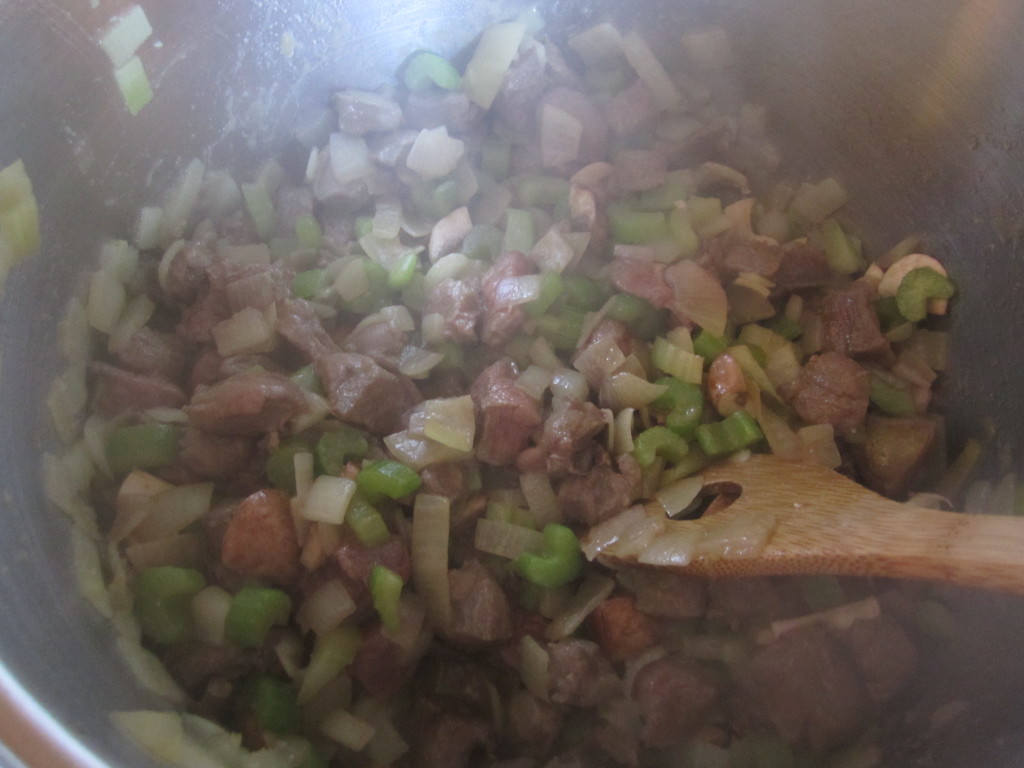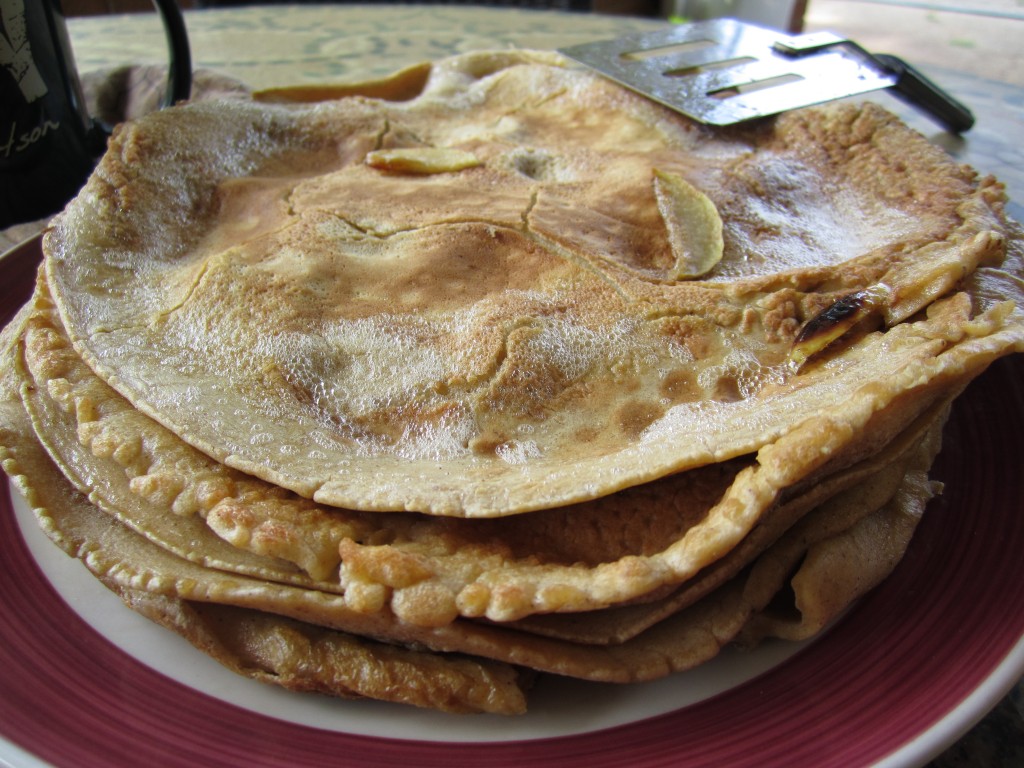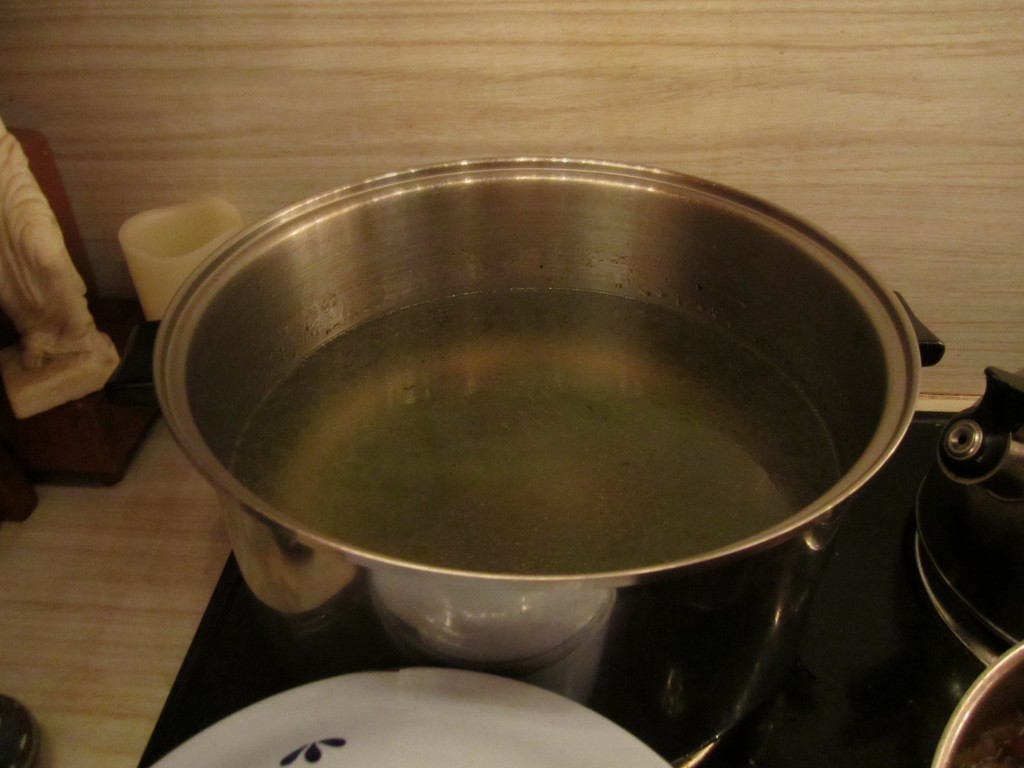This recipe is one of my favorites… Because it is basically my mom’s vegetable soup recipe with venison added! Yummy!
I recommend using your biggest pot for this one. You can see how big the one we used is:
1. Begin by adding olive oil to your pot and cutting it on medium-low.
2. Chop up 3 or 4 onions and approximately 1 head of celery. Add these to the pot with some salt and garlic powder and stir periodically while they saute.
3. Chop your venison steaks up into small cubes and add them to the pot. Stir often.
4. Slice 8 ounces of fresh mushrooms and add them to the pot. Also add more salt and garlic powder.
5. Add tomatoes. We used frozen tomatoes from our garden last year, mostly Cherokee Purples, San Marzano, and Black Plum paste tomatoes, but a few cherry tomatoes found their way in there too! If you are using tomatoes from the store, I would use 2 large cans of crushed tomatoes.
6. Add 1 small can of tomato paste.
7. Now add a spoonful or two of honey and some sprinkles of cocoa powder (all of this is to taste). This minimizes the acidic taste from the tomatoes and adds a creamy darkness.
8. Add spices: paprika, basil,and oregano, and of course more salt and garlic powder!
9. As the dish begins to simmer, add carrots (I used a little less than 2 pounds of halved baby carrots).
10. Add 1 large can of greenbeans (we didn’t have any of our own greenbeans left over from last fall).
11. I also like to add even more veggies… Frozen okra and frozen Lima beans (small bags of each) can also go in the pot now.
12. Add 2 small cans of corn.
13. Cook the soup on medium-low for about an hour-and-a-half, and make sure to stir it frequently since this is a very dense soup and can stick to the bottom of the pot if you’re not keeping an eye on it!
14. Check your soup and add more spices, if needed, and a little bit of soy sauce. Check to see how well softened the Lima beans and carrots are, and if you are satisfied with how done they are (and the spices), add 1 small bag of frozen peas. Stir them in and let the soup cook for about 15 minutes longer.
15. Check your spices again… And if you like it, then it’s done!!! If not, add more spices!!!
.:.

































